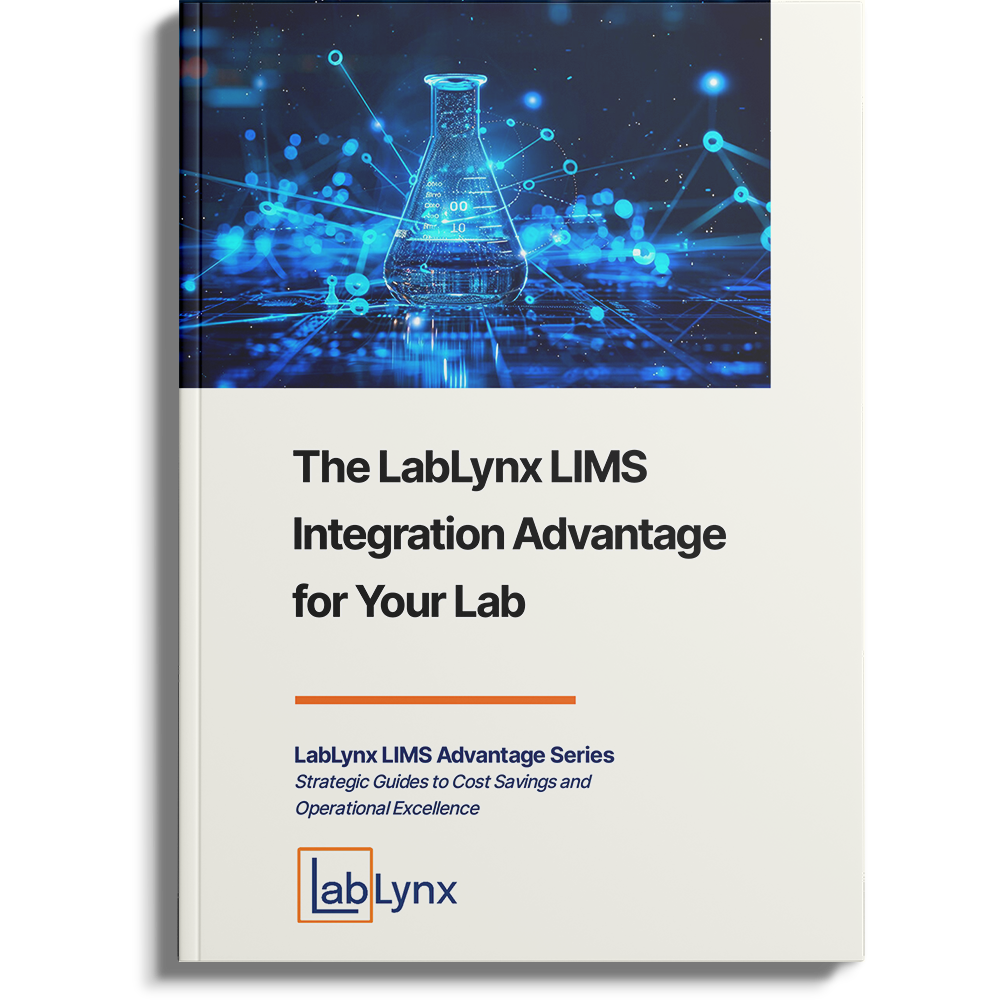
With all that’s going on in the world and its economies today, there’s no better time for manufacturers to turn to robotics solutions. From labor shortages and inflated material costs to supply chain backups and a potential recession, manufacturers are faced with many challenges. Those manufacturers who must design, produce, and test their products in controlled laboratory environments are no exception.
We interviewed Dave Borski, an engineer, and co-owner of Talentum Engineering Services, based in San Antonio, Texas, to cover some of the reasons why now is the ideal time to consider robotics. We also looked at some of his recent projects. In addition to running his own business, Borski is also a consultant with G²S Corporation, headquartered in San Antonio.
We’ll explore the benefits of a laboratory information management system (LIMS) for manufacturers who design and produce food, pharmaceuticals, and other products in laboratories, as well as the huge potential for combining the best LIMS software with robotics in these labs to exponentially improve efficiency.
Three reasons now is the right time for robotics
Here are a few of the reasons why now is the perfect time for manufacturers to consider adding robotics solutions to their production operations.
Labor shortages
It’s becoming increasingly difficult for manufacturers to find skilled employees. And because competition is stiff for the existing pool of available job seekers, wages have increased.
“I would say the labor shortage is how I’m getting a lot of my bids out, and it is how I’ve gotten some of my work,” said Borski. “We’re building a packaging system for a shrimp packing company on the Gulf Coast because basically, they can’t find people there to pack shrimp. It’s a dirty job. It’s really cold. It’s really nasty work. The laborers pretty much have to take bags and put them in boxes and mark them and freeze them and move them around. So we’re building a machine that’ll eliminate pretty much most of that work, and it will pay for itself in a couple of years. In the shrimp industry or any kind of industry like that, if the harvest has a bad year, they don’t make any money. So this is one way they can help keep their costs down.”
Cost-effectiveness
With expenses for everything from materials to labor and logistics high, manufacturers are taking advantage of every chance they can find to cut costs while remaining competitive.
“The labor shortage has driven a lot of interest in robotics. But now you’re seeing people moving from growth to cost efficiency and cost consciousness. They not only want to reduce headcount, but also get out of buildings, and lower inventories. And so you’d think it would be a bad time to invest in something like robotics, but right now is actually a good time to do it because there’s still a lot of business in the manufacturing side,” Borski explained.
“Retail’s gone down, but that’s eventually going to hit the supply chain. So if manufacturers start automating sooner rather than later, then as we see a slow-down in manufacturing, you will be able to have more cost-effective manufacturing lines at that point. So whoever survives this will win whenever the economy starts to ramp back up again. We’re in a weird phase right now because we have a recession, but we have no unemployment because manufacturers and companies are still making things because there’s still demand.”
Competitive edge
In an age where influencers and product reviews deeply sway consumer decisions, it’s vital that manufacturers focus on quality to maintain an edge over the competition. Robotics can also remove the human element and the potential for error in manufacturing processes, whether in the lab or not. “Anytime you have a person in the loop, there are going to be some mistakes or errors,” Borski said. “Robotics can really help with quality and repeatability.”
Robots will repeat the same process over and over countless times and do it the exact same way each time. This ensures product consistency regardless of which day or what time it was made. In addition, robots can also be leveraged to test products while ensuring they meet quality standards and are free from flaws.
Three key ways robots improve efficiency in manufacturing labs
Even though robotics in manufacturing labs is highly regulated, robotics can play key roles in these labs. Here are just three of the many ways robots are used:
Material handling
Robots are extremely efficient at moving materials or parts from one location to another in manufacturing labs. They can pour a precise amount of an ingredient into a formula. They can also locate and pull the right parts from bins and then get them to where they’re needed on a production line. They can do tedious work without making mistakes and move faster than humans.
Traceability
Robots make operations in manufacturing more efficient by adding traceability. This is especially important to some industries such as the food processing industry, where it’s crucial to know where ingredients came from and where the end product is going. “Some of this is still done by hand on paper or with cameras held by people,” said Borski. “And so we can put systems in place to automate all that and get all the data into a central repository.”
Testing and quality control
Introducing equipment like optical inspection systems into workflows and processes to automate quality control and improve quality is commonplace in manufacturing today, and it’s becoming more prevalent in manufacturing labs. Optical inspection systems such as robotic 3D inspection can do things like detect flaws during testing and ensure the accuracy of measurements with micron-scale precision.
How a LIMS eliminates manual processes and/or streamlines processes for improved manufacturing lab management
Tracking data in labs was first done with traditional pen and paper, later moving to the manual recording of data into spreadsheets. Some labs still use spreadsheets even though they are time-consuming, provide no audit trail, and leave a high potential for error.
Instrument integration is possible but limited to spreadsheets using macros. Spreadsheets make it difficult to enforce quality control, and these sheets also have to be stored in a digital environment that’s secure. For statistical analysis, users have to manually enter the data from a spreadsheet. And there’s no integration with external systems.
Today’s sophisticated labs have said goodbye to spreadsheets and instead rely on LIMS systems to save time, ensure quality, manage reporting, standardize processes, and ensure data is both accurate and secure. In short, a LIMS eliminates manual processes and makes the jobs of those working in manufacturing labs easier. For manufacturers with multiple labs, processes are standardized across all their labs.
A 2017 study[1] by Schmid and Aschoff found that research and development labs for manufacturing that produce pharmaceuticals and other products have come under increased scrutiny in recent years, with emphasis shifting from monitoring just the manufacturing of the products to deeper scrutiny of the entire product life cycle.
“Increasing regulatory requirements in the lab, as well as short timelines set by customers and competitive pressure, are [the] main drivers for initiating lab informatics projects,” the study said.
With so much information to track and record in manufacturing labs, it makes sense to consider an innovative LIMS solution to manage all that data.
LabLynx ELab LIMS integrates with automation in manufacturing labs
LabLynx ELab LIMS software is a complete laboratory solution that provides a full range of features manufacturing labs require to manage both research and development and quality control, from the raw material stage to the final product. It is designed to help manage specifications and identify out-of-limit results quickly and easily.
ELab is fully customizable to meet each lab’s specifications and needs and has the capabilities to automate data entry from lab equipment and instruments. It’s the ideal solution for manufacturing labs in many different industries, including consumer goods, discrete manufacturing, medical devices, mining and minerals, nutraceuticals, packaging, pharmaceuticals, and process manufacturing.
Here are five of the many ways ELab can help manufacturing labs run more efficiently while improving accuracy and relieving staff from the burden of manual processes.
- Production control: With ELab, labs can easily manage production control through recipe management, batch traceability, production planning, and enterprise resource planning.
- Quality control: ELab offers a variety of functionalities to assist in quality control. These include single or batch QA/QC tests, quality control charts, proficiency tests, certificates of analysis, and more.
- Sample tracking: The complete history of each lab sample is tracked and managed by ELab so that it doesn’t have to be done manually. ELab records which users touched each sample, what actions were performed, and when.
- Inventory management: LabLynx ELab makes it easy to keep track of inventory with barcode and RFID tracking. Other inventory functions include supply burn calculations, costing, price fluctuation tracking, reorder points, restock alerts, and more.
- Compliance: ELab supports regulatory compliance goals with standards like IS0 17025 and best practices like Good Automated Laboratory Practices (GALP), as well as regulatory mandates from agencies like the Food and Drug Administration (FDA) and the United States Environmental Protection Agency (EPA).
A real-world example of the LabLynx ELab LIMS at work
As a consultant, Dave Borski worked on a large project that implemented a LIMS software solution for a major healthcare organization. The organization managed a blood bank that housed a large number of tribal blood specimens which all needed to be transferred from old glass vials into less fragile polyplastic vials. It was important to track each specimen and its origins as the specimens were transferred.
“There were so many processes that had to be developed so that we didn’t lose any of these specimens because they were each one of a kind,” Borski said. “We hired LabLynx to do the integration, and everything on our end went very well with that project,” he said.
ELab was highly customized for this client and their specific project and, in the end, served as a whole program solution. LabLynx worked around the clock to meet project deadlines and helped overcome many obstacles that were presented by the client’s IT system and security requirements.
How robotics + a LIMS can seamlessly integrate for smarter manufacturing lab operations
As more manufacturing labs use robotics to do things like automating sample preparations and analysis, it only makes sense that robotics and LIMS software systems are going to more frequently work hand-in-hand in these labs.
When integrated, robotics and LIMS can communicate with each other with the flow of information going both ways. LIMS can also communicate between robotics systems and external process control systems to control sample flow and data transfer.
Because of this communication, a LIMS integrated with robotics can entirely remove the human element from some manufacturing lab processes by performing tasks like automatically registering samples and controlling sample analysis. For instance, LIMS can provide instructions and specs to robots on the analysis that they are to perform. They can even direct robots to repeat sample analysis when needed.
“With the recent advancements in material handling robotic automation, the integration of LIMS and robots will enable safer, faster, more reliable, and higher quality operations in manufacturing laboratories,” Borski said.
Interested in reading more?
Check out the LabLynx article LIMS in Manufacturing to read more about informatics in the manufacturing industry.




